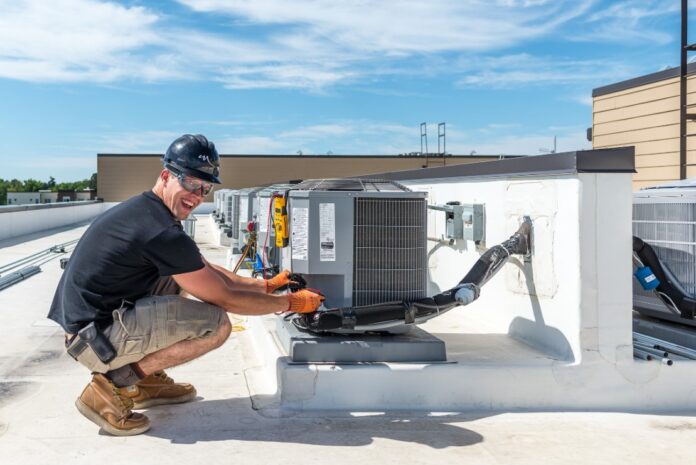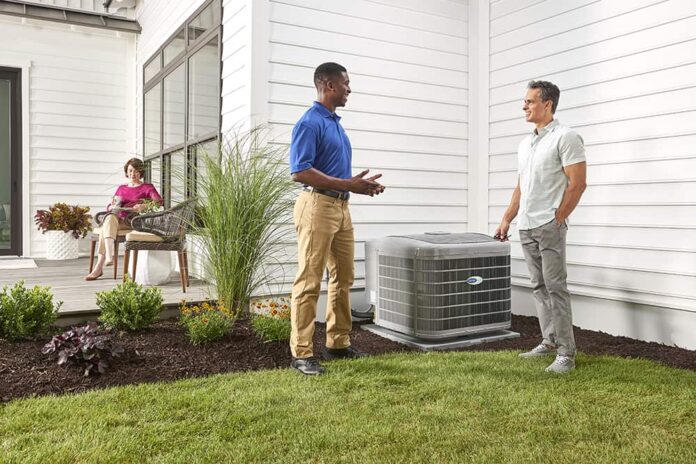
Establishing a successful HVAC service business calls for a solid pricing strategy. If you underprice your services, you’d consistently incur losses and eventually run out of business. But if you overprice, you may end up driving away potential customers.
Therefore, it’s critical to master how to properly price your heating, ventilation, and air conditioning services so it works for both you and your customers. Here are five incredible tips on how to go about it.
1. Send accurate quotes

Whenever a potential customer inquires about your services and how much you’ll be charging, you should immediately send them a professional quote. The quotation should be based on accurate cost estimates of the work to be accomplished, such as diagnosing the problem, building piping, installation of new HVAC units, or repairing electrical faults.
If you’ve done similar jobs previously, it should be easy to refer to the actual costs you incurred during your last assignment. However, keeping a detailed database of your costs might be challenging if you still prepare quotes manually on paper. To make the tracking of data faster and easier, you’re better off with industry-specific quoting software, such as Jobber and similar tools.
Such software allows you to keep track of every job detail, including associated costs and duration, which is useful for accounting purposes as well as for future reference. Additionally, an advanced HVAC tool can help with the following aspects of your business:
- Building quotes and estimates right from the job site
- Managing your team of technicians, ensuring each of them is dispatched to the correct site and none is double-booked
- Remotely monitoring your workers’ whereabouts with its GPS feature
- Allowing your workers to track their time worked for easy payroll processing
- Sending professional invoices and follow-up reminders to increase your chances of getting paid on time
- Communicating crucial developments with your team while doing heating, ventilation, and air conditioning repairs
2. Factor in overhead costs

Cost management is a core activity for HVAC businesses, especially with the current economic situation, where everything seems to be expensive. Overhead costs are ever-increasing, with perhaps no chances of going down anytime soon, making them a nightmare to many businesses. As such, learn how to control and minimize your overhead costs as best as you can. It would also help if you eliminate all the unnecessary costs.
You may have no problems in calculating material and labor costs when pricing your HVAC services. But that’s not all to think about. The money you get from every job must be able to cover the following expenses, too:
- Office rent
- Internet bills
- Electricity charges
- Fuel for your vehicles
- Cell phone airtime
- Administrative fees
- Workwear
- Taxes
- Licensing fees
- Advertising expenses
Taking this into account, make a point of estimating your overhead costs for, say, a week. Then divide this figure by the average number of hours you work every week. That should give you an estimate of how much money you should make every labor hour to cater to your overhead expenses. Then ensure you add this to your labor and material costs. You may want to check out academy.getjobber for more details on calculating overhead expenses as well as material and labor costs.
3. Establish a rational profit margin

Profit margin measures how much money your business makes, meaning it indicates how much money you’re left with after deducting all your expenses. For instance, a profit margin of 20% signifies a net income of 20 cents for every dollar of sales.
For your business, you’re the one to set up your desired profit margin. You can set it as high or as low as you want, but it’s critical to be realistic. If you’re a fresh entrant into the HVAC field, it may not be wise to aim for a 100% profit margin. This may push your service fees way too high, and you may not be able to justify it.
According to the Corporate Finance Institute, the average profit margin for most businesses is 10%. However, some go as high as 20%, and that’s considered good. Setting yours at 5% may be a bit on the low end. But you can use these figures as a rough guide when setting your profit targets. You can also use different percentages for residential and commercial jobs. The latter usually attract higher profits.
4. Consider competitor prices

Competition is the norm in any free market. It’s typical for customers to compare prices and offerings from different service providers before settling on one. The general tendency of consumers is to go for the lowest prices, especially if the standards of services are somewhat similar. But that doesn’t mean you always have to charge less than your competitors do.
You usually have three options when it comes to competitive pricing:
- Below the market: You can set your prices slightly below the average market values as a way to penetrate the market and build a broad customer base. The problem with this is you may end up making losses, and increasing your charges at a later date may be challenging.
- Same with the competition: You can simply adopt prevailing market prices, but then you’ll need to differentiate your firm through other ways to stand out from the rest.
- Above the competition: You can charge more than what your competitors charge, provided you justify why you’re doing it. You can offer flexible payment terms not typically provided by your competitors. But for it to work, you should never compromise on the quality of your services.
Whichever of these options you choose, it’s best not to deviate too much from your competitors’ prices.
5. Discount strategically

Discounts are an excellent way to motivate and win customers, but you’d want to limit them to a specific duration to create a sense of urgency in the public. No customer wants to miss out on a chance to save money, and that’s how the psychology of discount works.
However, don’t give very generous discounts and end up with no profits at all. What’s advisable is to set discounts below the intended profit margin. If you’re working with a profit margin of 20% and give a discount of 10%, for example, you’ll still be left with a 10% profit.
Conclusion
Pricing your HVAC service jobs requires a bit of in-depth thought. It’s not simply a matter of calculating the labor and material costs and adding a markup. You have to consider other factors like competitor prices, overhead costs, and whether or not you should offer discounts. Also, using sophisticated quoting software in your HVAC business can help you achieve accuracy and professionalism.
These are some of the tips you can keep in mind to make the pricing work for you and your customers. Consider following these recommendations and see the difference they can bring to your business.











